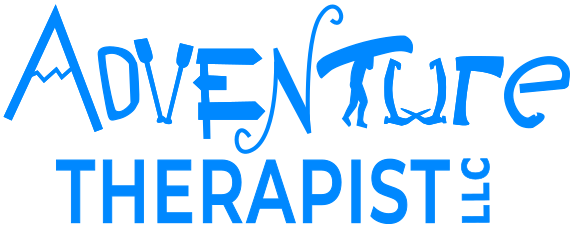Can TeleHealth be Experiential? Absolutely…
In the last few days, all of the facebook groups for therapists have had a consistent focus… TeleHealth solutions are choppy, impersonal and getting used to them is challenging. As more and more of our field begins to transition to online and virtual solutions to provide therapy during the practice of ‘social distancing’, how do we stay true to the therapeutic approaches that we as adventure therapists use when we aren’t facing a global pandemic? While it’s been a while since I practiced telehealth sessions, here are a few favorites plus a few new ideas and resources to help get your creative virtual-adventure brain turning. For best results, I’d recommend experimenting with these things first so that you can give clear instructions when a client is on the line.
Virtual Therapy Activities
Use Google Images to Process Feelings or an Event
Send your client to images.google.com and have them pick an image that helps them discuss how they are feeling. Give them a prompt to help narrow the search. You can also copy the link at the top after you have already entered a specific prompt and have them select a specific image. For example, my favorite images to process with clients are “animal hybrid photoshop” images. You could instruct your clients to go to google images and search for “animal hybrid photoshop” or you could send them a message with a link to the web address: https://www.google.com/search?q=animal%20hybrid%20photoshop&tbm=isch. Once they are there, have them screen share (if your service allows it) refer to it by location or describe it until you can find it.
Of course, you could have your clients search for any other images too, but I would encourage you to give it a trial run first so that you don’t end up processing any pictures you don’t want to have come up during your session.

Use Google to Draw, Write, and Complete Worksheets Together
- Disclaimer – Please ensure that you are working within Google in a HIPAA Compliant way. You should have a BAA set up with Google, and ensure there is no information that would identify your client.
Google Docs has some pretty amazing collaboration features built into its suite of office applications. Try using Google Drawing to work on a drawing together with your client. If you are a clinician who uses worksheets, you can import a worksheet into google Drawing and work on completing it with your client. Make a therapy meme, draw a picture of their week, diagram their family relationships, or make a diagram to help understand what’s going on in their life. Here is a link to a helpful YouTube video about how to collaborate on a drawing in Google: https://www.youtube.com/watch?v=ZGLutiZAw6Y.
These same collaboration tools are available in Google Docs. Write a poem together, make therapy Mad Libs, or make a list of feeling words together.
Do a Virtual Tour Together
Is there a place that could be a good metaphor to your client’s current situation? It might be helpful to explore the metaphor by going on a tour together. Here is a great post about a variety of virtual tours that could make some great metaphors. Immersing yourself and your clients in these environments is likely to help build deeper connections and empathy. Exploring a virtual space could help to explore both metaphor and direct experiences such as “how do you feel when you are able to relax into calm green space?
Psychoeducation and YouTube
I love YouTube. It is the second most popular search engine as of today, but it also curates a huge collection of informative videos. There may be a short video that helps to psychoeducate a client, or perhaps a video that tells a story relevant to the client’s recent story. These could be assigned as homework or serve as a brief interlude to talking!
Share a Photo
Have your client share a photo from their phone, camera, or wall that best represents something that is occurring in their life. Perhaps this is a personal strength, perhaps this is a recent occurrence or perhaps this is something that they are currently struggling with. Metaphors will make this go farther than just an update on the life of their cat.
TherapistAid
This website was recommended as a good resource. It looks like it has some wonderful interactive resources for free, or more on the paid plan!
Adapt Adventure Activities for Home!
Scavenger Hunt around the House
- The space you feel the most safe, relaxed, loved, etc.
- Something that represents a challenge you are facing
- Your best coping strategy…
- If self care was a place in your house…
- ETC… be creative! You know your client better than I do 🙂
Holding your Own Hand
What happens when you fold your hands, but then re-fold them so the other finger is on top? It feels pretty weird, and this can be a great way to illustrate habits, somatic awareness and breaking cycles / habits.
Mundane Sculpting
When I am in the wilderness with my clients, I’ll often have them gather natural objects (sticks, pine cones, rocks, snowballs, etc.) to create an expressive sculpture with. What would happen if they made an expressive sculpture out of objects that are in the room and showed it off to you as though it was fine art. Artists are usually pretty good at sharing the deep meanings that they include into their artwork. What is the meaning behind a unique pile of socks, dirty dishes, and a house plant? I bet you’ll get some great answers!
Learn to Juggle!
Most homes have two or three objects that are safely tossable. Juggling is a challenging skill to learn, but it is also a great metaphor for many challenges our clients might face. What is their reaction? Do they expect to be good at it? Terrible at it? Do they say no to the request? It’s all pretty amazing stuff to process.
The Floor is Lava (with a selfie)
This one seems pretty self explanatory. I imagine many clients who aren’t used to this style of therapy might think this was silly or crazy or not play along, and that’s okay. Saying No, holding a boundary, and / or embarrassment could be some great topics to discuss in this case!
Non-Dominant Drawing
Art therapy is a really powerful modality that can allow clients to express themselves without having to use words. Trying to express oneself while using only their non-dominant hand will give them a great chance to express themselves, and probably also bring up some other thoughts, feelings, and emotions around the topic.
What the Fork?!
Challenge your client to see how many pieces of silverware (or plasticware) they can stack and balance while holding onto only one handle. I thought of this activity this morning, and was having so much fun trying to get past eight pieces that I burned my breakfast!

Family Sculpting (the online version)
This is a classic family intervention, and if you are doing a family session, it is a pretty natural transition to being able to facilitate this activity with the family on the screen. Alternatively, you can have the client create a family sculpture using toys, objects or drawing as well.
Dungeons and Dragons
Julia Stifler shared the following on Facebook “what about Dungeons and Dragons? One of my clients and I have been playing in person, and I’m going to experiment with a Zoom adaptation today. It’s been SO cool as a tool for processing our relationship with each other and the client’s approach to conflict. The game is rich with metaphors, and we get to pretend we are exploring a vast wilderness, encountering obstacles, practicing communication across species and races, waving magic wands, etc.”
A Few Tips to Spark Your Inspiration!
- Think through the types of household items that your clients might have around the house, and ask first. It’s a lot easier to imagine which activities might be feasible if you know they have access to saran wrap, aluminum foil, markers, a stuffed animal and some silverware. Perhaps they have figurines or other toys. Even asking about these items might bring up interesting conversations!
- Ask about the space they are in. Are they able to move around and still have privacy? Are they stuck in just one spot?
- What device are they on? Phone, smartphone, laptop, desktop? This will change a lot about how they might be able to interact, and could impact some of the suggestions above.
Go Be Creative, and Come Back to Share!
Hopefully, this quick list of ideas will be enough to ignite your creative spark! The goal is to have a little fun in a meaningful way, and to break up those moments of disconnect (pun intended!). Ultimately, this too shall pass, and we will all be able to get back to the good ol days of in person therapy and well stocked grocery stores! Good Luck, and please stay tuned to our Facebook Page and our Mailing List if you would like more updates on this topic!


